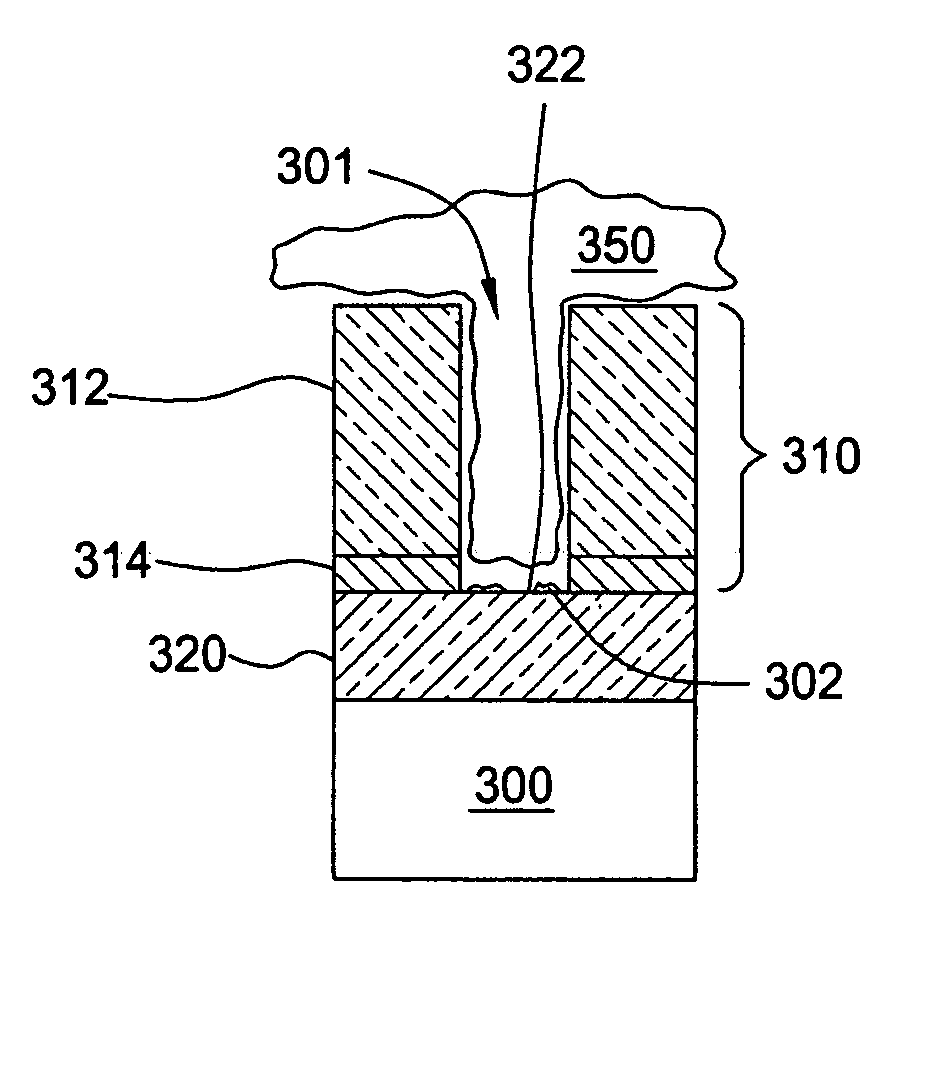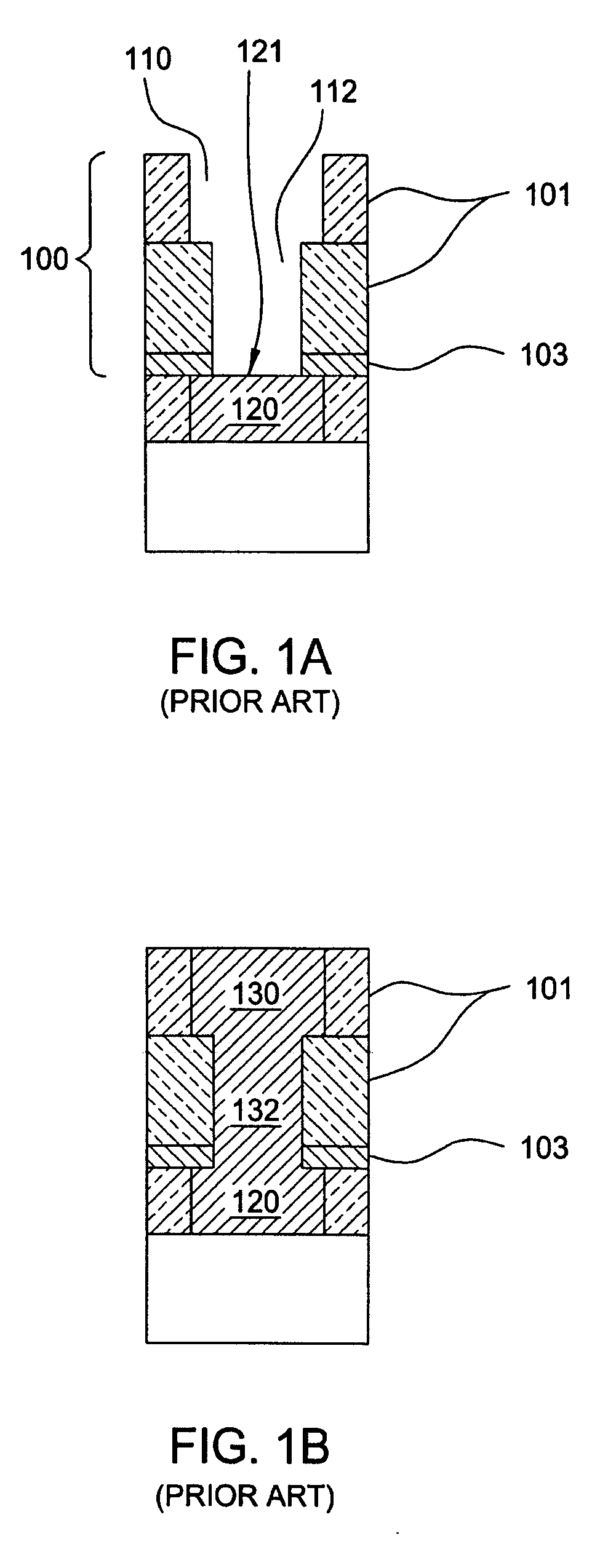Post-etch treatment to remove residues
a post-etch treatment and residue technology, applied in the direction of cleaning process and apparatus, cleaning using gases, chemical instruments and processes, etc., can solve the problems of shrinking transistor size, affecting the performance of the device, and posing many challenges
- Summary
- Abstract
- Description
- Claims
- Application Information
AI Technical Summary
Benefits of technology
Problems solved by technology
Method used
Image
Examples
example
[0041] To illustrate applications of the present invention, the substrate 300 with layers of materials formed thereon as shown in FIG. 3B or 5E is prepared according to the process flow described in steps 402 through 404, shown in FIG. 4, or steps 602 through 610, shown in FIG. 6. In one embodiment, the substrate 300 may be a silicon substrate of 200 mm (8 inch) or 300 mm (12 inch) diameter. The low-k dielectric layer 312 may have a thickness of about 0.4-1.5 microns. The barrier layer 314 may have a thickness of about a few hundred angstroms. One example of a material suitable for use as the low-k dielectric layer 312 in FIG. 3B or 5E is Black Diamond™ film, commercially available from Applied Materials, Inc., of Santa Clara, Calif. One example of a material suitable for use as the low-k dielectric barrier layer 314 is BLOk™ (barrier low-k) film, also available from Applied Materials. BLOk™ film is a silicon carbide based film formed using the chemical vapor deposition (CVD) or pla...
PUM
| Property | Measurement | Unit |
|---|---|---|
| Temperature | aaaaa | aaaaa |
| Temperature | aaaaa | aaaaa |
| Temperature | aaaaa | aaaaa |
Abstract
Description
Claims
Application Information
 Login to View More
Login to View More - R&D
- Intellectual Property
- Life Sciences
- Materials
- Tech Scout
- Unparalleled Data Quality
- Higher Quality Content
- 60% Fewer Hallucinations
Browse by: Latest US Patents, China's latest patents, Technical Efficacy Thesaurus, Application Domain, Technology Topic, Popular Technical Reports.
© 2025 PatSnap. All rights reserved.Legal|Privacy policy|Modern Slavery Act Transparency Statement|Sitemap|About US| Contact US: help@patsnap.com



